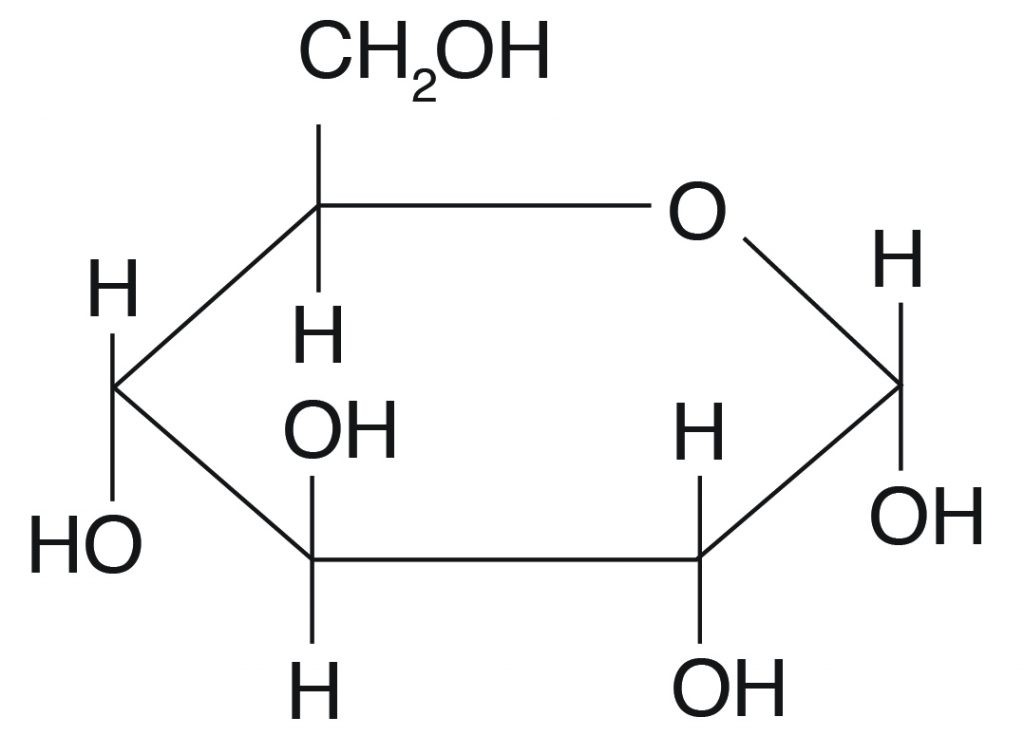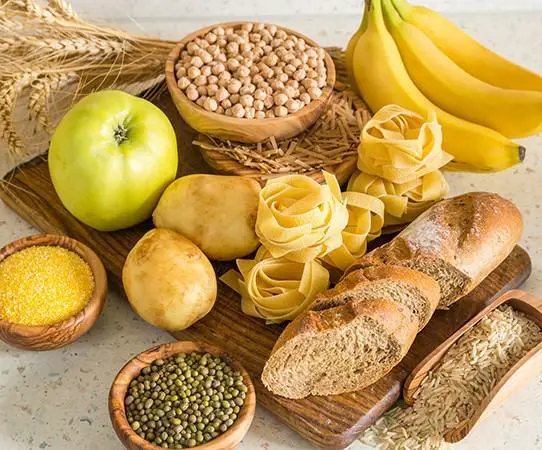Hi, now we are going to discuss different types and examples of carbohydrates in which we will talk about the chemical nature of carbohydrates and their properties along with different sources of carbohydrates and some examples of carbohydrate-rich foods and we have already discussed carbohydrates metabolism.
Table of Contents
General Overview of Carbohydrates:
The name carbohydrates suggest its chemical nature, it has carbon, hydrogen, oxygen and they are the primary source of energy in our diet. They present a rich amount in sugar, starch, and grains and they have a great role in providing most of our daily energy needs and they are much simpler than other types of food sources.
The complex disaccharides and polysaccharide we take through our diet is broken down in our digestive system and converted into simpler form glucose which is further used as a source of food by the process of respiration and the glucose also involved in the different cellular structure like outer receptors of the plasma membrane and others structure.
Glucose metabolism is very important for our body cells in which excess glucose is converted into glycogen which store in the liver and muscle and the process by which the glycogen is converted into glycogen is known as glycogenesis while the breakdown of glycogen into glucose during the time of energy requirements is known as glycogenolysis and the general formula of carbohydrates is Cn(H2O)n so it means that carbohydrates are hydrates of carbon.
Different Types of Carbohydrates:
Carbohydrates are either present in simple monomeric form or polymer of the simple monomeric complex form where we categorize different carbohydrates into different categories according to the degree of polymerization.
Simple Carbohydrates:
Simple carbohydrates are made of only one monomeric sugar unit or may polymer of 2-9 monomeric sugar unit and they easily digested so uptake of those carbohydrates increase the blood sugar levels and as they do not have vitamin, fibers so they are known as empty calories and present in high amount in refined sugar, candies, and fruit.
Monosaccharides:
They are most simple carbohydrates which have single monomeric carbohydrates molecules and most common examples of monosaccharides are glucose, galactose, and fructose, all these are hexose sugar because in their molecules six carbon atoms are present but the can be 3 carbon molecules (trioses), four-carbon molecule (tetroses), 5 carbon molecule (pentoses) or 7 carbon molecule (heptoses).

Disaccharides:
Carbohydrates in which two monomeric sugar units combine to form 2 unit polymeric carbohydrates are known as disaccharides as seen in the case of sucrose, maltose, and lactose and upon break down those disaccharides with the help of carbohydrases enzyme we get monomeric carbohydrates.
Oligosaccharides:
In oligosaccharides, more than 2 and up to 9 monomeric sugar units combine together to form polymeric structures which upon the action of hydrolytic enzymes break down and return all the monomeric simple sugars molecules.
Complex Carbohydrates:
In complex carbohydrates, large numbers of simple monomeric carbohydrates are combined to form large polymeric carbohydrates and they need much more time to digest than the simple carbohydrates due to their large polymeric structure. Complex carbohydrates are present in potatoes, whole grains, cereals, corn and show extensive branching sometimes.

Examples of Carbohydrates:
- Cellulose is a very common examples of carbohydrates which is main raw material for formation of cell wall in plant and human do not able to digest the cellulose due to the absence of cellulase enzymes in human but ruminants can digest cellulose due activity of some bacteria present in their digestive system.

Cellulose has great tensile strength due to its fibrous structure and due to cellulose plant cells will become much stronger to protect the cell from the outer environment.
- Starch is another example of carbohydrates in which a large number of monomeric sugar units combine together to form larger polymeric carbohydrates and they show two types of polymerization, amylose and amylopectin.
Topics Related to “Types and Examples of Carbohydrates“:
| biomolecules and their types |
| Calorific Value and its Importance |
| Differences Between Aerobic and Anaerobic Respiration |
| Breathing in Different Animals |
| Autotrophic Nutrition General Overview |
What are the Examples of carbohydrate-rich Vegetables?
In vegetable carrots, broccoli, sweet potato, corn, beets, cabbage, butternut squash, zucchini, acorn squash, pumpkin, spinach, chickpeas, navy beans are rich in carbohydrates and you should include them in your diet for your carb requirement.
What are the Examples of carbohydrate-rich Fruits?
Banana is carbohydrate-rich fruit and generally, a medium-size banana provides around 30 grams of carbohydrate, some other carbohydrate-rich fruits are apple, pineapple (around 20 grams per cup), grape, mango (around 29 grams per cup).
What are the Examples of low carbohydrate-rich Foods?
Eggs have almost zero level carbohydrate, in meat chicken, pork, turkey, bison, lamb have very very fewer carbohydrates, in seafood and fish salmon, shrimp, catfish, lobster, cod, tuna, herring, shellfish, sardines have low carbohydrate content, in vegetables, tomato, onion, eggplant, cucumber, green beans, asparagus, mushrooms, in fruits strawberry, apricots, avocado and in the nut almonds, peanut, walnut have very very low carb content.
What are the Examples of starchy foods?
Potato is rich in starch and it is generally used as vegetables most of the countries and other major sources of starch are bread especially brown bread, cereals like oat, wheat, rice, barley, corn are starch-rich food, pasta is also rich in starch.
Why Cow, Buffalo, and other ruminants can digest cellulose but humans are unable to digest cellulose?
Cow, Buffalo has a special chamber in their stomach known as rumen in where cellulose digestion takes place and some microorganisms take part in break down of cellulose but in humans, no enzyme is present to breakdown the cellulose into simple sugar.
What is the Most Abundant Carbohydrate in Nature?
The most abundant carbohydrate is Cellulose and which is a major component of the plant cell wall and it is also the most abundant organic compound on earth it is made of a large number of glucose monomers.
What is the Importance of Carbohydrates in Living Cells?
If we talk about the importance of carbohydrates then first of all carbohydrate is one of the structural components of living cells. especially in plant cells, the major component is cellulose and in plasma membrane carbohydrates are present as glycolipids then the next point is carbohydrate is a very important nutrient and it gives us the energy to maintain our living system.
What is the Chemical Nature of Carbohydrates?
Carbohydrates are generally made of carbon, hydrogen, and oxygen but some carbohydrates contain sulfur, nitrogen, and phosphorus and they are organic compounds with the functional group aldehyde or ketone and they are hence are known as aldose and ketose.
What is the Simplest Form of Carbohydrates?
Monosaccharides are the most simple form of carbohydrate and they are made of only one type of monomeric unit among monosaccharides glucose is the most simple form and it is used as a living cell directly in respiration.
What is the Most Complex Form of Carbohydrates?
Cellulose, starch is made of a large number of monomeric sugar units and they are known as complex carbohydrates some sources of food like potatoes, barley, quinoa, oatmeals are rich in complex carbohydrates.
Hi Everyone!!! Welcome to Imaluop. Imaluop always try to learn some new and he want to share to other people. Here we will try to learn various topics on Science, specially on Biological Sciences.